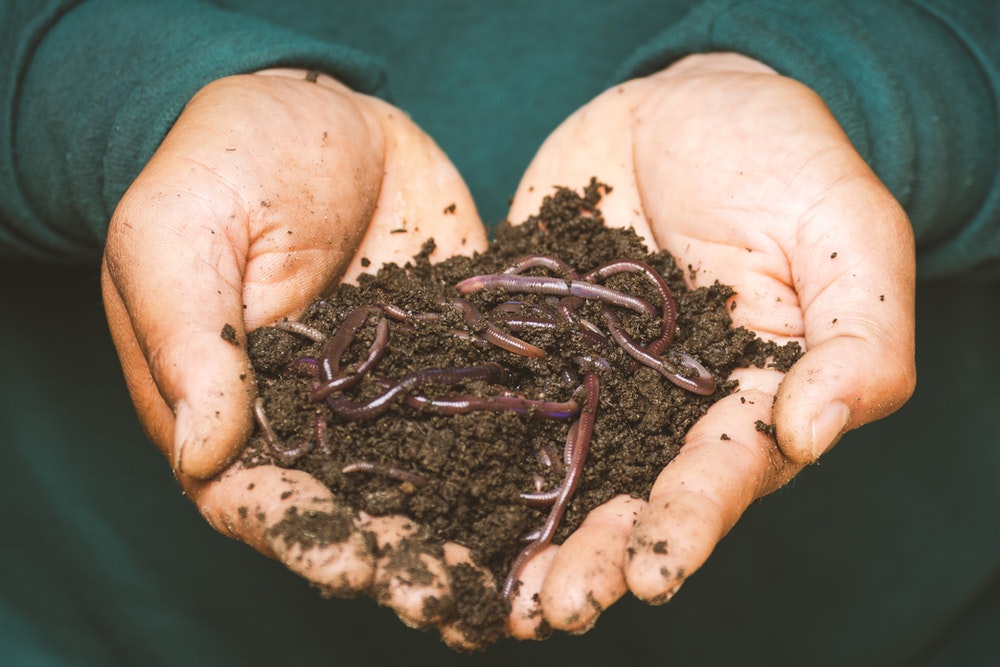Many of us now recycle all our glass, cans, paper etc, however this is different – when making compost, you actually get to see (and use) the results. Read on to see how we make this into lovely stuff we can put to good use, and in the meantime why not have a go – you know you want to.
Making compost
Take a look at compost, it’s not very impressive is it? A load of dried grassy stuff, an old egg box, some trimmings from a bay tree, weeds. Underneath are lot’s of vegetable peelings (there’s no shortage of these – neighbours help out and of course we have all the trimmings from the vegetables we put into our soup and veg chilli, salads and curries).
Also included are grass trimmings, weeds from the garden, cardboard, teabags, wood ash from the wood burner and anything else that has ever lived (but not cooked stuff).
You water it as often as you remember, turn it once or twice during the season, cover it and walk away.
When it’s time to think about getting the plot ready for the new season, open up the compost bin and miracle of miracles… you find beautiful, sweet smelling, fresh garden compost which will feed and enrich your soil, making for a really productive crop.
It took me ages to get this right – we had our run of soggy slimy results in the early years, however now it seems we have worked out the secrets – making compost is second nature to me now, and I can’t think of anything more rewarding!
Now you know all about making compost, what to do with it? Well a few years ago when I first started making it (and when I started to get it right) the next dilemma was “how do I turn all that nutritious food into something my plants can use?”
Quite by accident we saw this idea on a TV allotment program, and we decided to have a go! It’s called a “shaky riddler” and what it does, is turn all that lovely garden compost into a beautiful fine tilth.
All the hard work is gone. Just empty bucketfuls of your fairly rough mixture into the sieve – stand at the end and give it a hard shake – back and forth until all the lovely compost has showered down onto your bed and you are left with a few lumpy bits. Return these to your existing compost heap where they will continue to rot down, ready for later on in the season.
By doing this you will provide your new seedlings with a wonderful start – just a couple of centimetres on each bed is all that is needed for a really good head start in life. At the same time by recycling all your weeds, grass cuttings, fruit and vegetable scraps, tea and coffee grounds etc, you can be assured that you are continually adding goodness to your soil which in turn will reward you with delicious home-grown produce.
I can’t think of anything more rewarding!
Apparently growing your own is really taking off now and reaching a wider audience, as people realise how much satisfaction is to be gained from simply putting in a few seeds, the excitement of watching them break through the soil, seeing them reach for the skies, and finally tasting their delicious fruits!!!
For more details of how to make your own “shaky riddler” please contact James via the website!
Now while you think about how you are going to make yours, have a quick look at these news stories for even more compost making ideas!
Compost Bins
If you have enough room, it is always best to have two compost bins – you can be filling one up while the other one is rotting down – believe me, it doesn’t take long to fill a compost bin right to overflowing – you’ll wonder where you are going to put the next lot of garden rubbish!
If you have a few days between weeding sessions, however, it very quickly rots down and you will be able to fit more in.
Plant a summer crop
If your compost is unlikely to be disturbed after May, it is a good place to plant a marrow or a couple of courgettes!
You can build a bin out of old pallets, or any old timber – you are just looking for something to contain the raw materials. If you are short of ideas, just take a trip to your local community plots or allotments – there you will find loads of ideas – the ingenuity of allotment gardeners is incredible!
If you have a small garden, and the compost bin cannot be hidden, consider growing a shrub or two close to it – it will quickly reach a height of 6 feet!
Here is a list of suitable things to add to your compost heap
- Annual weeds and plants
- Coffee grounds and tea leaves
- Eggshells
- Lawn mowings
- Manure
- Paper and card
- Straw and hay
- Stable litter
- Spent potting compost
- Rhubarb leaves
- Vacuum cleaner dust
- Vegetable peelings
- Withered perrenials or partly decomposed leaves and stems
- Shredded twigs and branches
Why not have a go at making compost – and give your plants the best possible start in life!
If you are serious about making compost – site your bin where you can access it easily – and make sure you can get a wheelbarrow up to it!






